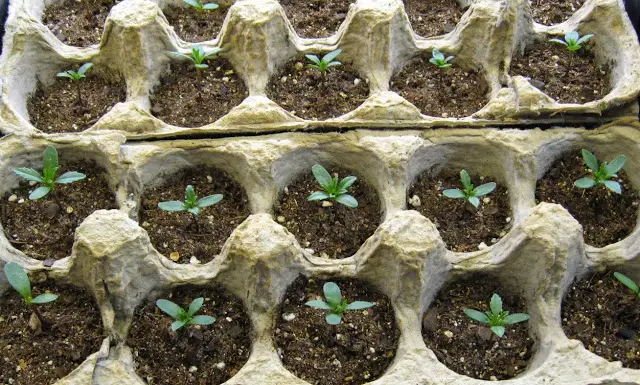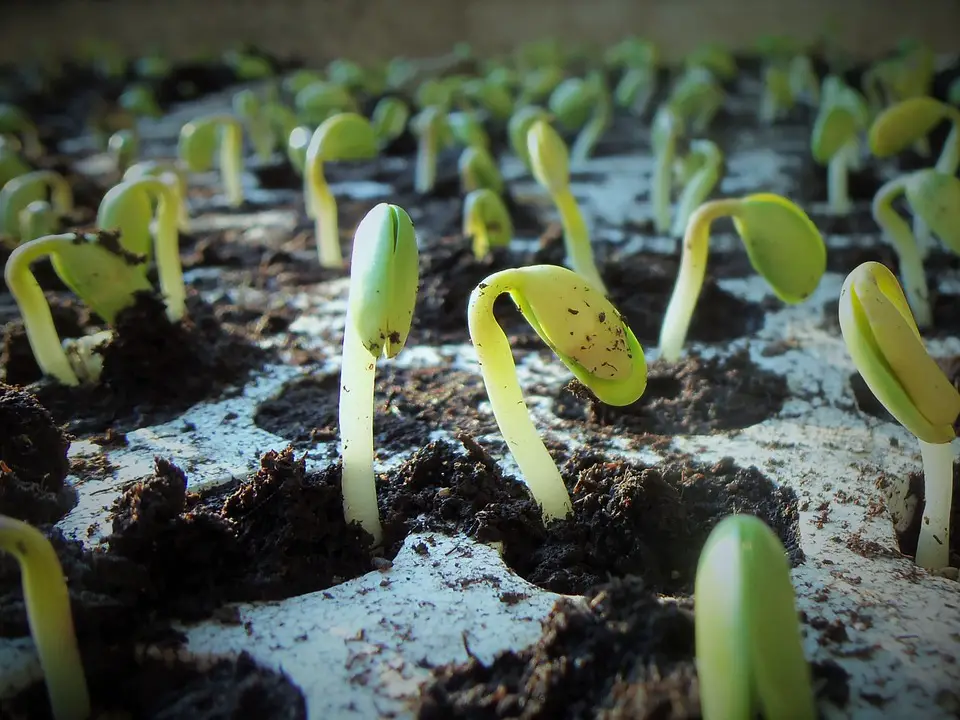We use affiliate links to run our site. When you buy through links on our site, we may earn an affiliate commission, without any added cost to you. Learn more
Today we are going to discuss how you can grow seedlings in your house and use it to grow plants instead of growing directly from the seeds.
What are The Advantages of Transplanting Seedlings?
Now, you must be wondering why we should take the pain of preparing seedlings when we can easily grow plants directly from seeds. So let me tell you this, there are two major advantages of growing seedlings instead of growing plants directly from the seeds.
Firstly, it drastically reduces poor germination possibilities. Unlike directly growing from the seeds in this case proper care is taken to every seed so that each of them gets the most favorable condition for germination. So the seed wastage is greatly reduced.
Secondly, when you transplant the seedlings to the permanent spot where they are meant to grow chances of survival of the plants are increased greatly as they become adaptive to the climate outside.
In most cases when we grow plants directly from the seeds this is the time when most of the plants die as they try their best to adapt to the surroundings.
How to Start Growing Seedlings
To prepare the seedlings you first need to have high-quality seeds. You can buy from your nearby nursery shop or you can use your own.
The seeds from a commercial supplier are generally are of superior quality as it is prepared under professional guidance. If you are planning to buy the seeds please refer to the dates mentioned in the packet while buying.
The next thing which is very very important in transplanting is the media or the soil. Different media are used, to prepare the seedling. But while choosing, remember it should allow air and water to reach the seed, and it should provide nutrition in those early times.
What Is The Best Soil For Seedlings?
Don’t use regular garden soil for growing seedlings. Garden soil may not be fine enough for seeds to root through properly. Always use a potting mix that is particularly made for growing seedlings.
How Do You Make Seedling Soil?
If the mix available in the market seems too expensive, you can also make your own medium for growing seedlings.
By volume, mix two parts of compost, two parts of coconut coir, and one part of perlite. In this mix compost provides the much-needed nutrients for the seedlings, coconut coir will retain the moisture in the mix and perlite will add very good aeration. Perlite will also make your seedling mix very light.
Alternatively, you can opt for peat moss in place of coconut coir and sand in place of perlite. Just remember if you replace perlite with sand your mixture will be a bit heavier.
Mix the ingredients thoroughly with a spade or hand (always use gloves) and make it a constant mix so that the ingredients are smoothly distributed.
Unsterilized vs Sterilized Medium
The next question is should you use the sterile or normal medium. Well, in most of the cases, the medium used by professional gardeners are sterile in nature. It reduces the chance of fungal or any other diseases.
You can easily find sterile media from your nearest garden shop. One of the major drawbacks of using sterile media is that it contains almost no nutrient. So you need to transfer the seedlings in early stages or they would die.
Where to Grow Seedlings?
Once you have finalized about the seeds and growth media it is now time to select the containers.

The most popular are plastic seedling trays. This form is widely used by the gardeners and nurseries across the world. It can save you lots of time and space by selecting these them than going for individual pots.
You can also choose to use used egg cartons or paper cups. Sometimes tiny pots made up from peat moss or coconut coir is also used.
How to Grow Seedlings?
Now once you have selected all your ingredients, let’s go ahead and start the process of growing seedlings.
Put some mixture (growth media) in every pot or compartment of the tray, sow the seed and cover it with some mixture.
Add a little bit of water to keep the mixture moistened. Keep the tray in a place inside your house and wait for the seeds to germinate.
Should Seedlings be Covered?
After sowing the seeds, cover the pot with a plastic wrap. Seeds are very sensitive to over or unwatering. You certainly don’t want to disturb the germinated seeds by heavy-handed watering.
Covering the pot with plastic wrap helps to maintain a constant moisture level in the medium. As soon as you see fresh seedlings break through the soil remove the plastic wrap.
How Do Seedlings Grow?
For a seed to germinate it needs 3 main factors. They are water, optimum temperature, and a good enough medium.
When you plant the seeds they first grow roots. These roots then anchor the seed into the medium. A small seedling then starts to develop and eventually comes above the soil. This is called seed germination.
Initially, the seeds get their nutrition from the food supplies stored within the seeds. Once they become a bit large they will start making their food through photosynthesis.
How often should you water seedlings?
One of the trickiest parts of growing seedlings is the watering. The amount of water is vital because it can make or break the seedlings.
Use a mister or a small watering can to water the soil. Make sure the soil is damp but not soggy.
Here are some useful tips for watering the seedlings:
- Use bottom watering techniques to water the seedlings. Water the plant from the bottom hole of the container and not from the top. This method will make the roots of your seedlings very strong and also eliminates the chances of overwatering.
- Use self-watering methods like water globes. Fill it with water and insert the attached stake into the soil. The soil will draw moisture from the globe as needed.
- Make your own watering system. Fill a large bowl with water. Make a wick using fabric, rope, or yarn. Put one end of this wick into the water bowl so it reaches the bottom of the bowl and the other end 3 inches deep into the soil.
- Ask a neighbor, friend or family member to water seedlings for you if you plan to go on vacation.
- Check the wetness of your plant’s soil periodically.
Plants are the most susceptible to pests, disease, and other problems in the seedling stage. As the seedlings are very delicate in nature you need to take utmost care.
Once they germinate, put the tray in a place where the tray gets sunlight. It will ensure proper growth for the seedlings. After two to 4 weeks (depending on the plant and the size of the seedlings) transplant them in their permanent spot.
When to Transplant Seedlings From Seed Tray?
When it comes to transplanting your seedlings, choose a cloudy day. Overcast conditions give the plant a better chance to adjust to the new environment, so it doesn’t get withered by direct sunlight. Late afternoon is also a good time for the same reason.
Make sure the garden soil is moist but not overwatered. It is also a good idea to water the planting area before transplanting the seedlings if you think the area is dry.
Don’t judge the transplanting time by the sheer size of the seedlings. There is not a size fit for all. It differs from plants to plants and variety to variety. A better way to judge is by the presence of true leaves. Once your seedling has three to four true leaves it is probably mature enough to transplant.
Amazon and the Amazon logo are trademarks of Amazon.com, Inc, or its affiliates.
